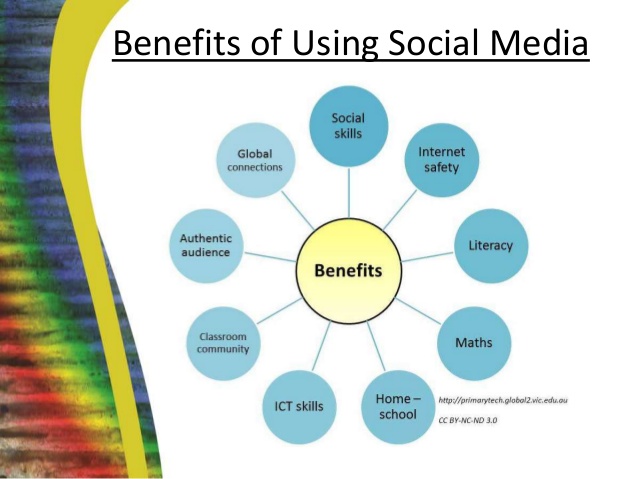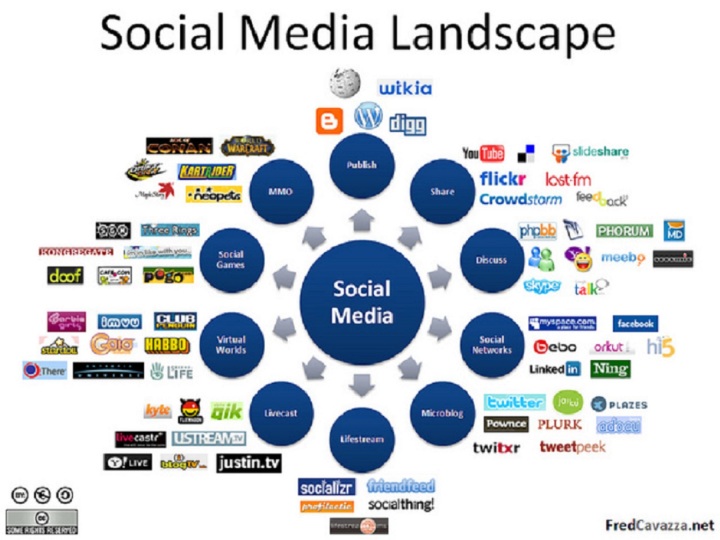Social media is an essential part of our students’ lives as teachers. Within that reality, we as educators need to learn to utilize social media as a technology tool. Social media as a technology tool in the classroom helps provide students with access to information, tools to collaborate within and outside the classroom, and ways to share final products. According to recent statistics, 92% of students go online daily, and 93% of students have at least 1 social media account (PEW Research 2015). While we as educators are constantly looking to find new technology tools to utilize, sometimes social media is ignored for a fear of students misusing the websites. I would argue that despite these fears, we should be incorporating innovative technology students will actually use in the real world into our curriculum. Social media is here, and it will stay, maybe in different forms, but our students will use it now, and they will use it in future schools and jobs. In this reality, our students need to learn now innovative ways to use these tools that are responsible and promote learning. Social media is not something to fear and back away from, but needs to be embraced if we are going to win our students to the idea of collaborating online. As Don Goble states in his argument supporting the use of Social Media:
Social media has become one of the greatest educational tools of all time, and yet, it goes untaught. Why? Fear of the unknown? Lack of value? The time is now for education to instead embrace this form of learning and begin, even in small ways, embedding social media lessons in all classrooms.
With the amount of students that are using and incorporating social media into their daily lives, they are learning already how to discuss, collaborate, and plan, outside of the classroom. These are skills we as educators champion for , yet it still is taboo to view social media as a tool that empowers and teaches our students good communication skills. In my experience, students want to work together and collaborate on assignments, and social media provides easy to use tools, that students can use to connect and share ideas and work. Not only can this be done within the classroom itself, but across the country and even the world. No longer will a student’s work just have to be pinned to a bulletin board outside the door, instead it can be tweeted, or posted on Instagram, for people from all areas to see, interact with, evaluate, and share among others. As the image below shows, there is a wide variety of skills and benefits that arise from the use of social media:

Harry Dyer’s TED Talk is a fascinating research into how our students are learning to communicate in the online environment of social media. As he discusses, there is a wide variety of resources and websites that exist, and we need to learn to understand and incorporate the tools our students utilize and understand. Social Media is not just students posting on Facebook, and re-tweeting funny pictures. It is multifaceted, with tools that promote product and image sharing, tools that can help connect people to collaborate together, and tools that promote creativity. There is a large variety of social media tools that exists, and each one has an effective purpose for our students. We aren’t limited to just having them post or share on Facebook, and Twitter.

If our students learn to utilize social media as a resource, and not just a space to be distracted and socialize with friends, then they will follow along with ways to incorporate these tools into education. Below are some ideas on how to incorporate these tools:
- Instagram can be used to share ideas and products within a visual space, and students can be excited about showing their learning to others.
- Twitter, Instagram, and Snapchat can provide a live feed that posts updates about class, inquiry questions for students to consider with projects, and spaces for students to communicate with people near and abroad.
- Facebook can be used to share ideas that students find online in a common space, to help provide a basis for creativity.
- Twitter provides space where students can tag their products and share them in a collective project challenge, something Twitter has previously done.
- Youtube can be used for students to share creative presentations of projects to a wide audience.
- LinkedIn can connect students to people working within a specific field, help them begin network (especially older High School students), and follow engaging stories from leaders from a variety of backgrounds.
- Skype can be used to have discussion with other classrooms abroad, or experts that from other regions that can teach guest lessons.
- Students can use any of a number of blogging sites as ways to post and share writings to a wider audience. Weekly check-ins for a project, reflections, or research ideas are just some topic ideas that students could write about it.
- Using hashtags, students could follow a feed of specific topics or even share their own ideas about these topics to a more direct audience.
There are a lot of resources that exist that can help begin the creation of a curriculum that incorporates these tools. However, I think it is important to gauge your own students, the social media sites they use, and also to have your own creative presence exist within the realm of the curriculum. Some resources I have posted are below:
How to use Social Media from Drexel University
10 Ways to use Social Media in the Classroom
Overall, social media is an important conversation to have when designing curriculum. As Vicki Davis writes in a blog for Edutopia ” Social media is here. It’s just another resource and doesn’t have to be a distraction from learning objectives. Social media is another tool that you can use to make your classroom more engaging, relevant and culturally diverse.” We want to promote our students in a 21st century classroom, and social media is a tool that exists that can begin to bring our classrooms firmly into the mindset of promoting creativity, collaboration, and engagement, all relevant signs of a 21st century classroom.